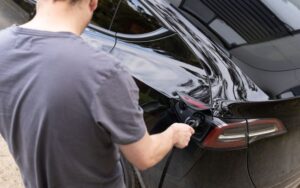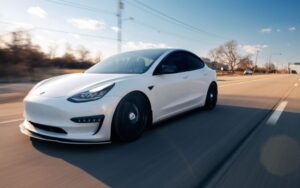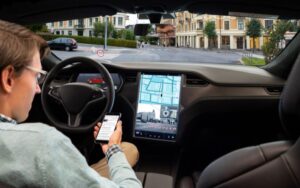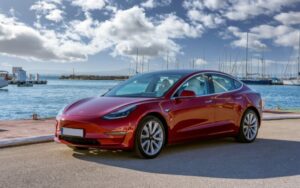Tesla Energy Display Rated Vs. Ideal (In-Depth comparison)
Last updated on April 18th, 2023 at 11:16 pm
Electronic vehicles are becoming more popular in recent years. However, while sales are increasing, the idea of electric cars is still new for most users.
And because of instances like this, it is good to understand how the car works.
A Tesla has two different energy displays that you’ll see while driving. The first is the Rated energy display, which shows you how much power your car uses at any given time. The second is the Ideal energy display, which shows you how much power your car could use if you drive in the most efficient way possible. Understanding the energy efficiency of your Tesla will enable you to get the best out of it.
This article will compare your Tesla’s rated and ideal energy display.
By the end, you will understand the best way to maintain the battery of your Tesla and the various techniques to get the most range while driving your Tesla.
What Is the Difference Between the Rated and Ideal Range on a Tesla?
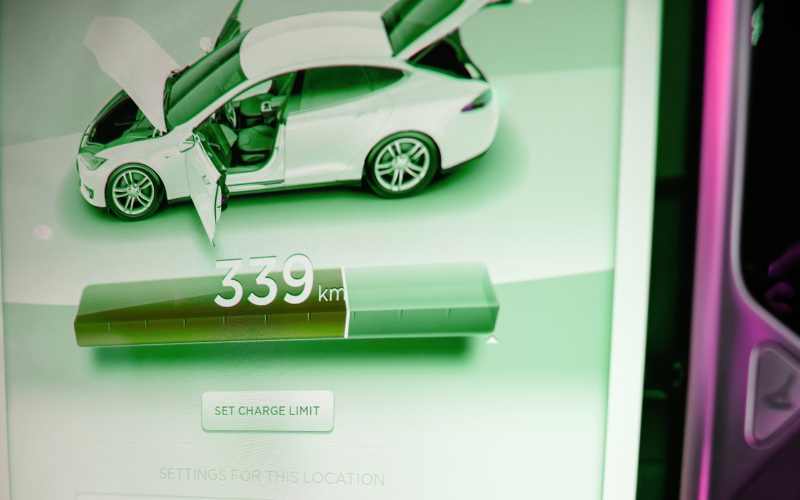
The rated and ideal range display on your Tesla is key in helping you make important decisions during a drive and maintain your machine’s battery better.
The ideal range on a Tesla is the expected range you can get from a full battery charge.
This display is based on the battery capacity, which can be affected by outside temperature and other factors.
Conversely, the rated range estimates how far you can drive with a full charge.
The manufacturer’s standards and other variables like the driving style and road conditions help estimate this number.
When comparing the two numbers, it’s important to remember their differences.
The rated range may be higher than the ideal range due to different calculations and assumptions used by Tesla when calculating them both.
However, this does not mean you will always get more miles out of a full charge than the ideal range displayed.
The Rated energy display helps you make the most of your battery life. It’s based on real driving data and tailored to your driving habits.
On the other hand, the Ideal energy display is a more theoretical calculation based on ideal driving conditions.
It’s only sometimes applicable in the real world, but it can be a useful tool for maximizing efficiency when squeezing every last mile out of your battery.
The table below summarizes the differences between a Tesla’s rated and ideal energy display.
| Rated Energy Display | Ideal Energy Display |
|---|---|
| Displays the number of kWh your battery is currently storing. | Displays the number of kWh your Tesla battery is capable of storing. |
| The rated energy display is affected by battery age and usage. | The ideal energy display follows the battery’s original specifications. |
| Rated energy gets modified to personal driving habits. | The ideal energy serves as a helpful device for maximizing your battery efficiency. |
How Do I Get the Most Range Out of My Tesla?
The joy of any car owner is getting the most out of the machine, which applies to a Tesla too.
But, at the same time, a Tesla is an electric vehicle, and its consumer desires to cover the desired miles as much as possible.
Several factors regulate the range your Tesla will cover, some of which concern your driving patterns, the maintenance level, and environmental elements.
Understanding your Tesla’s energy efficiency is one of the best ways to get the most range out of your Tesla and enjoy long miles of rides.
When it comes to the energy rating of your Tesla, you will find the rated and ideal energy efficiency displayed.
The rated energy efficiency represents the number that reflects what your Tesla will use on average over a range of different terrain and weather conditions.
On the other hand, the ideal energy efficiency represents the best-case scenario and what your Tesla will achieve when all its systems are working perfectly.
It would be best to consider these two ratings when comparing different models.
For example, suppose you want to compare two Tesla cars side-by-side and see which will be more economical.
In that case, you should look at their rated energy efficiencies instead of their ideal ones.
It would help to know that number will be a more accurate representation of how each one performs in real conditions.
Factors That Affect Your Tesla’s Range
- Driving your Tesla at high speed will drain the battery, giving a short drive range.
- The terrain will affect the range. For instance, driving uphill requires more energy.
- Weather conditions such as rain, headwinds, excessive cold, and heat will affect the range of your Tesla.
- The battery life of your Tesla will also affect the range.
- When you persistently run short trips with your vehicle, it will influence the range.
- Constantly having stop-and-go driving moments will influence the range of your Tesla.
- Your charging habits will also influence the range of your Tesla.
Tips for Gaining Better Efficiency From Your Tesla
Attaining better efficiency from your Tesla is simple. However, it requires a bit of attention. Here are some tips for getting the most out of your vehicle and its energy display.
Keep an eye on the rated versus ideal energy display. If you see that the actual is significantly lower than the rated, you should look at your driving habits and adjust accordingly.
Check and maintain your tires regularly. Ensure they’re inflated properly and have plenty of tread depth to handle slippery roads and keep your vehicle in good shape.
Use regenerative braking when driving downhill, as it helps you recharge your batteries while going downhill, which can help improve efficiency.
Keep up with maintenance, such as oil changes, engine cleaning, and other preventative work that can help keep your vehicle running smoothly for longer.
Why Does My Tesla Charge Show Less Miles Than Normal?
Do you ever wonder why your Tesla charge shows fewer miles than normal?
First, you must understand that electric vehicles are sensitive to little changes, affecting the machine’s overall performance.
A hitch with the battery management system is one of the reasons why your Tesla charge will show fewer miles than normal.
It could result from miscalculations to prevent overcharging by the battery management system.
In such a situation, you will need to recalibrate your battery management system to fix the problem.
Also, the difference between rated and ideal energy displays is another factor to consider.
The rated energy display measures the expected range of a full charge, while the ideal energy display measures the maximum possible range you can obtain.
Implying getting more miles out of charge is possible than indicated on the rated energy display.
A good rule of thumb is that the ideal energy display is 20-30 % higher than the rated energy display.
So, if you’re expecting more miles out of your Tesla charge, it’s worth checking out which setting you have selected.
You can switch between viewing the rated or ideal energy display in your vehicle settings at any time.
Generally, if you see a discrepancy between the ideal and actual energy readings, it typically means that something needs fixing, either your battery or power system.
In this case, it’s best to contact Tesla service to have them take a look at it.
FAQ
Why Does the Estimated Range of My Tesla Decrease Overnight While My Car Is Off?
Your Tesla depletes about a percent of the charge per day when parked. Although the amount gets even higher in some cases, it would help deactivate certain features.
How Far Does a Tesla Electric Car Go Per Charge?
The range covered by a Tesla depends on the battery capacity and the model of the Tesla. In addition, factors such as driving patterns and weather conditions affect the range.

Hey, I’m Michael Davis, a 35-year-old with a degree and a love for cars and tech. Since I was a kid, cars have been my thing—so much that I even thought they ran on magic beans! Fast forward, and I’ve built Vehicle Army, your one-stop-shop for easy-to-understand car facts.

